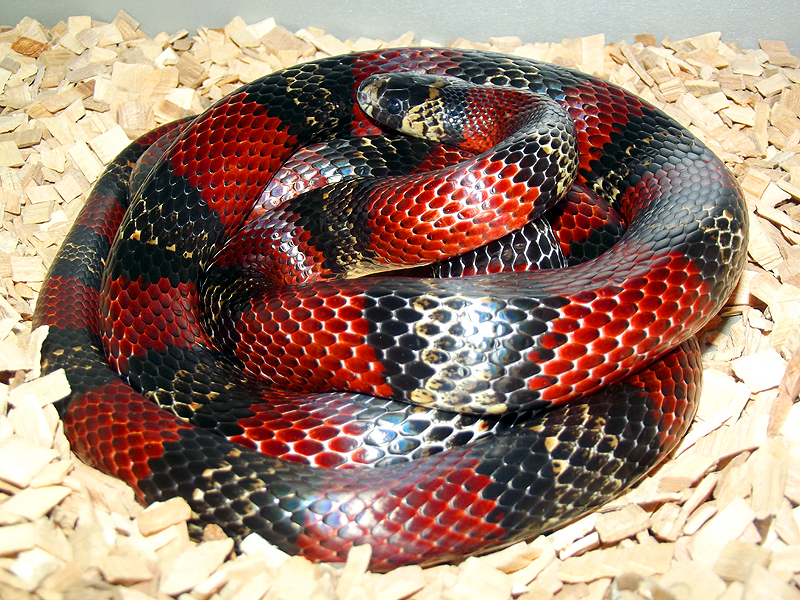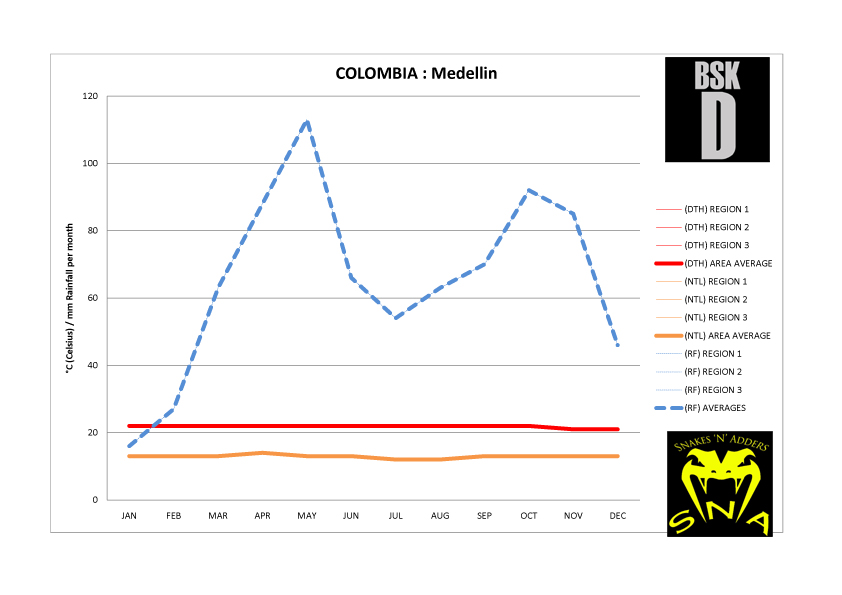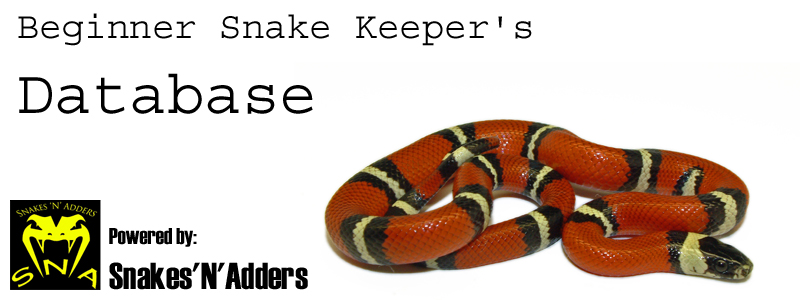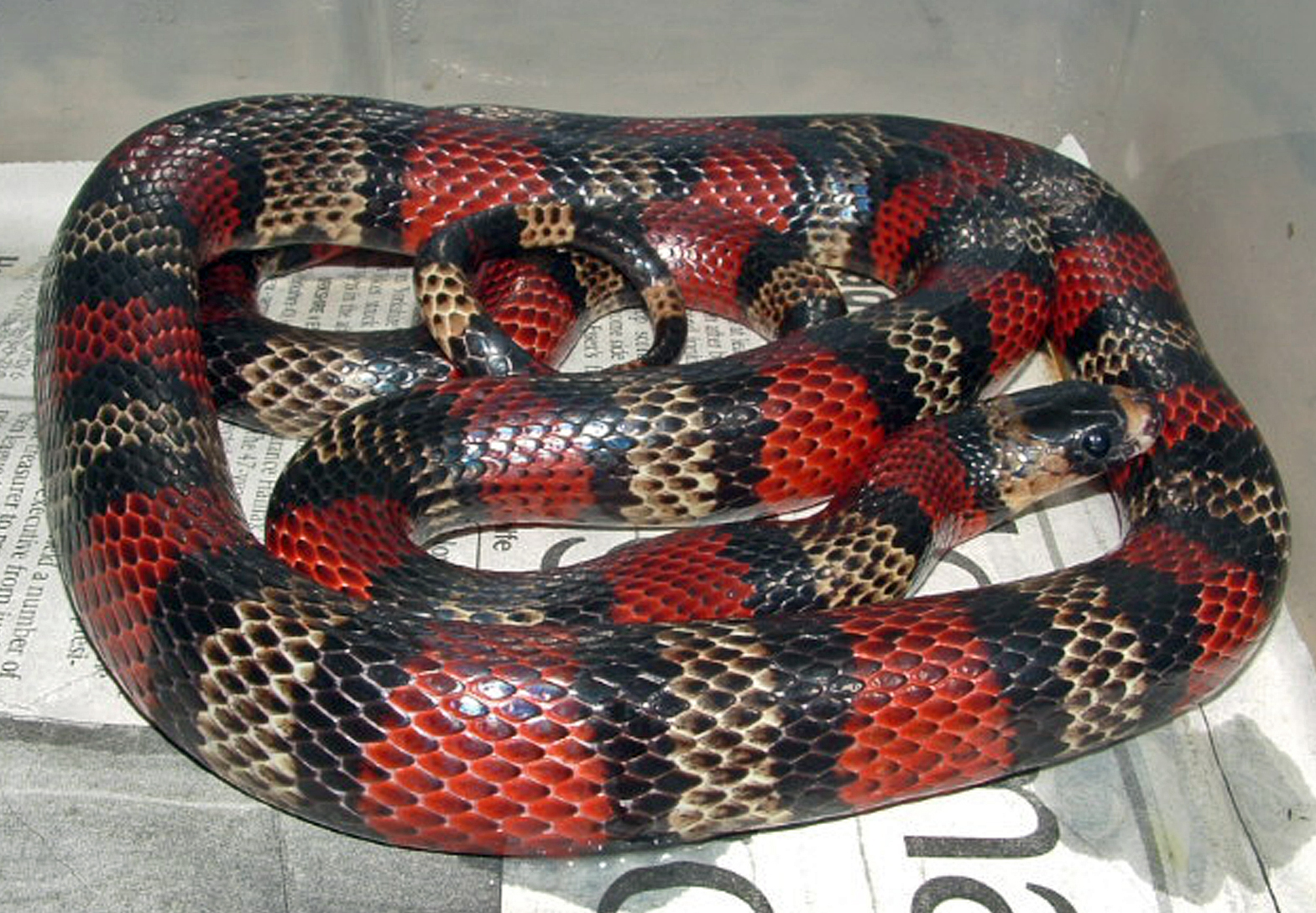
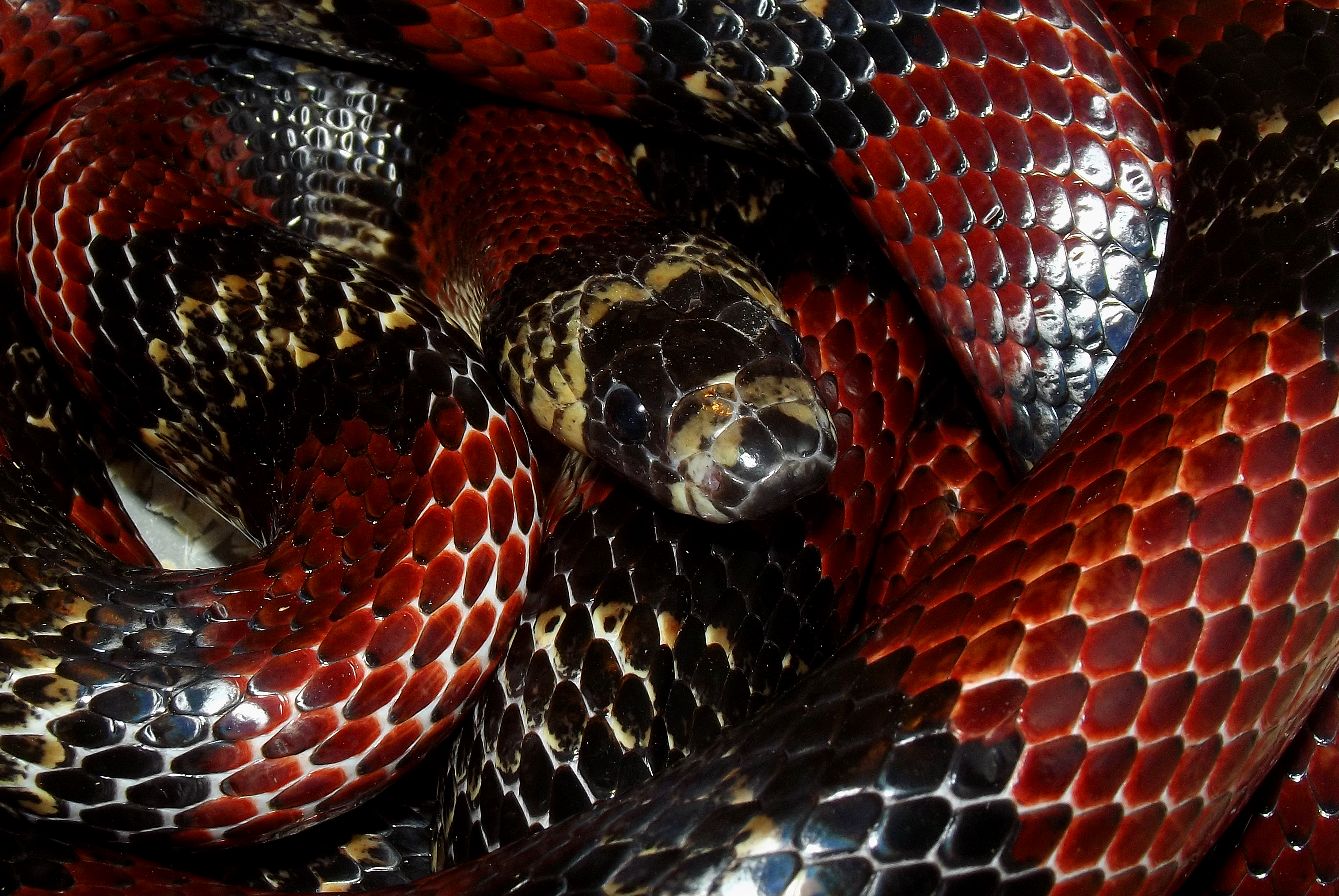
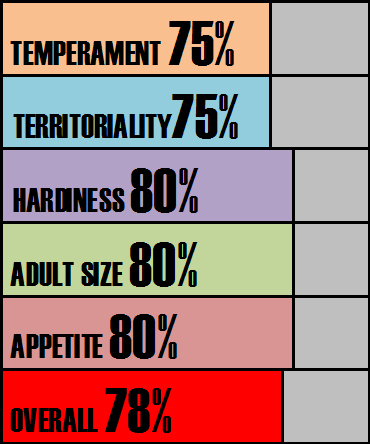

Species Notes based on experiences:
Milk Snakes are examples of batesian mimicry. Milk Snakes have evolved to impersonate the deadly Coral Snake (Micrurus). The old saying Red next to Yellow…kill a fellow, Red next to Black….venom lack or friend of jack. This is in reference the way the annulations or rings of the milks snakes pattern are arranged. Save for adult size, the amount of black pigment present and overall build of the snake Milk Snakes are generally very similar snakes to consider as pets regardless of subspecies. Some species have been excluded from consideration because of their much smaller than average size such as the Red Milk Snake (Lampropeltis triangulum syspila) which may require lizards as first prey to establish in captivity. All the Milk Snakes listing on this site will generally feed unassisted on rodent prey from birth. The Andean Milk Snake is a large milk snake from the montane hillsides of Colombia. Due to elevation this is quite an extreme area to occupy. To aid with thermoregulation and basking a large amount of black pigment is present on the snake particularly in adults. Eventually all scales will develop a black tip to them whether they are a black, red or yellow scale. This can give the appearance of being dark or dirty. This does seem to be an unfair characterisation though and in person they are still attractive in their own right.
Score analysis:
When considering temperament, Andean Milk Snakes are generally very well behaved. They are not particularly nervous or flighty snakes like some of the other Milk Snakes listed here. Of course exceptions will occur but for the most part this is one of the most compliant milk snakes one could own. If defensive behaviours occur, this will include tail rattling and vacating the contents of the cloaca. Biting is incredibly rare, the preoccupation with nervous Milk Snakes is to escape.
Territory issues are nearly always more prevalent than true temperament issues. If startled snakes may rattle their tail and throw coils of their body in an agitated manner. This usually ends up covering the head (on purpose), if this fails a Milk snake may dart away trying to escape the human that disturbed it.
The hardiness of this snake is nature is beyond question but in captivity Milk Snakes can be a little nervous. This may affect the way they feed. This slightly more high strung nature can lead to the impacts of stress being more easily seen than in other snakes. Young snakes may only tolerate small sporadic periods of handling, excess disturbances may see them fast in hunger strike. A balance must be struck.
Andean Milk Snakes are larger milk snakes usually reach 5ft in length. Rarely they approach 6ft. This is not a particularly heavy set milk snake and the body is of elegant proportion. Milk Snakes are deceptively strong and are superb constrictors of prey. You will feel this when handling the animal.
Initially babies may be nervous and flee from food offered on tongs. It can take a good 6 months before the snakes are comfortable strike feeding. Some keepers just default to leaving their snake to it and leave their prey on a tray for them to hoover up in their own time. Milk Snakes are cannibals, they should be housed separately always. In the wild they are reptile feeding specialists taking both other snakes and lizards. Pairing of animals for breeding trials should be done with care.
Tub:
50ltr (exceptional animals would benefit from a vivarium)
Vivarium:
120cm x 60cm x 60cm
Budget rig: -
60cm x 30cm heat pad
On / off thermostat
Digital thermometer to monitor thermostat performance
Warm hide
Cool hide
Water bowl
substrate
Recommended rig (vivarium only): -
250w ceramic heat emitter
Ceramic lamp holder and bracket
Bulb guard
Day night thermostat
Digital thermometer to monitor thermostat performance
Various logs and caves along the thermal gradient
Damp hide
Climbing and exercise branches
Plants and foliage (live or artificial – your choice)
Water bowl
Substrate
UVB light (8w T5 shade dweller 7% kit from Arcadia or equivalent) (optional)
Subterranean section to vivarium for further psychological security (optional)
Climate analysis:
The high elevations at which this subspecies occurs means that a deep and protracted Brumation will be required in the wild. We can be somewhat easier going in captivity and a reduction in temperature to around 12°c with a slightly reduced photoperiod will be of benefit. Mature animals may start to fast in anticipation of this cool down whether the temperatures are manipulated or not. The Brumation also help to keep the snake at a healthy weight and increase sperm production in males for the subsequent breeding season.
Conclusion:
Not the brightest or prettiest of Milk Snakes. This would be a collectors species more than likely. It is a perfectly acceptable pet snake for a beginner but the likelihood is nowadays they will be fetching increasingly high prices owing to rarity and will get snatched up by Milk Snake collectors.
.jpg)
